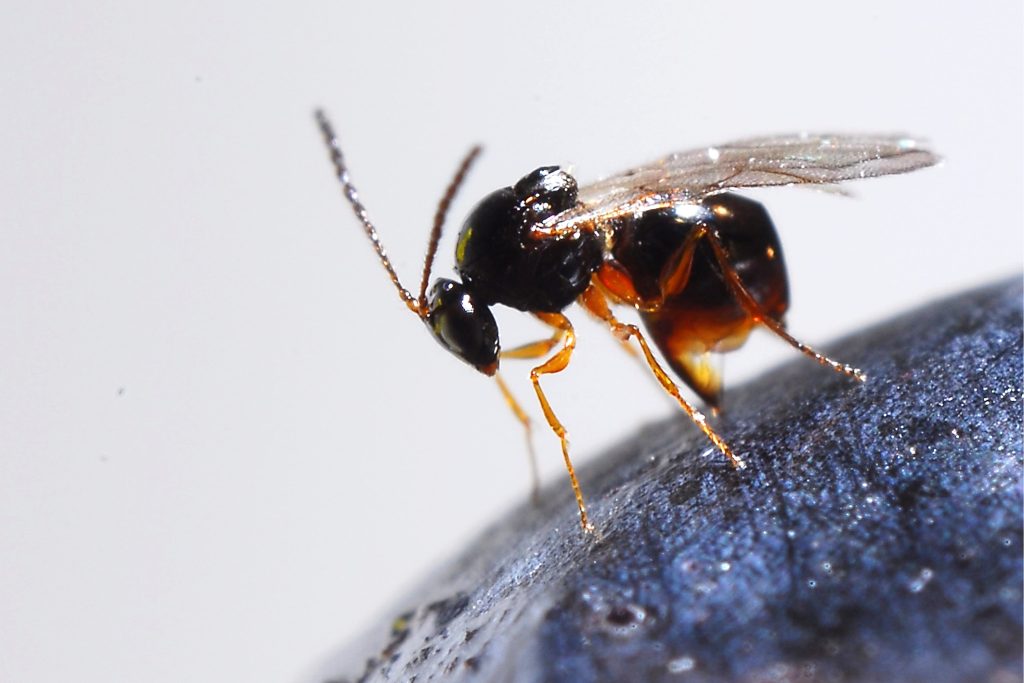
Fruit & Vegetable: OSU Extension to release SWD-parasitizing wasp
by Kym Pokorny, Oregon State University

An invasive insect from Southeast Asia, SWD arrived in Oregon in 2009 and soon became a major pest of soft fruit crops like cherries, peaches, figs, blueberries.

A tiny wasp attacks invasive spotted wing drosophila. Photo by Dr. Kent Daane, University of California, Berkeley.
After 12 years of research, a parasitic wasp that controls a highly destructive fruit fly will be released by Oregon State University agricultural scientists in June.
Vaughn Walton, extension entomologist and professor in the university’s College of Agricultural Sciences, said the U.S. Department of Agriculture (USDA) has permitted release of the wasp (Ganaspis brasiliensis), a slow process that took more than 10 years from application to decision. Now that they have a permit, Walton’s lab, which is part of the OSU Agricultural Experiment Station, is raising enough wasps to make a dent in the spotted wing drosophila (SWD) population in Oregon.
An invasive insect from Southeast Asia, SWD arrived in Oregon in 2009 and soon became a major pest of soft fruit crops like cherries, peaches, figs, blueberries, strawberries, raspberries, blackberries and wine grapes. Damage from the invasive insect costs the country’s agricultural industry approximately US$500 million a year. Especially disquieting is its affinity for blueberries, which is Oregon’s ninth-most valuable crop at US$120 million in 2020. Management of SWD in the blueberry industry alone costs growers $100 million a year nationwide.
This article originally featured in Fruit & Vegetable Magazine. Read the full version here.